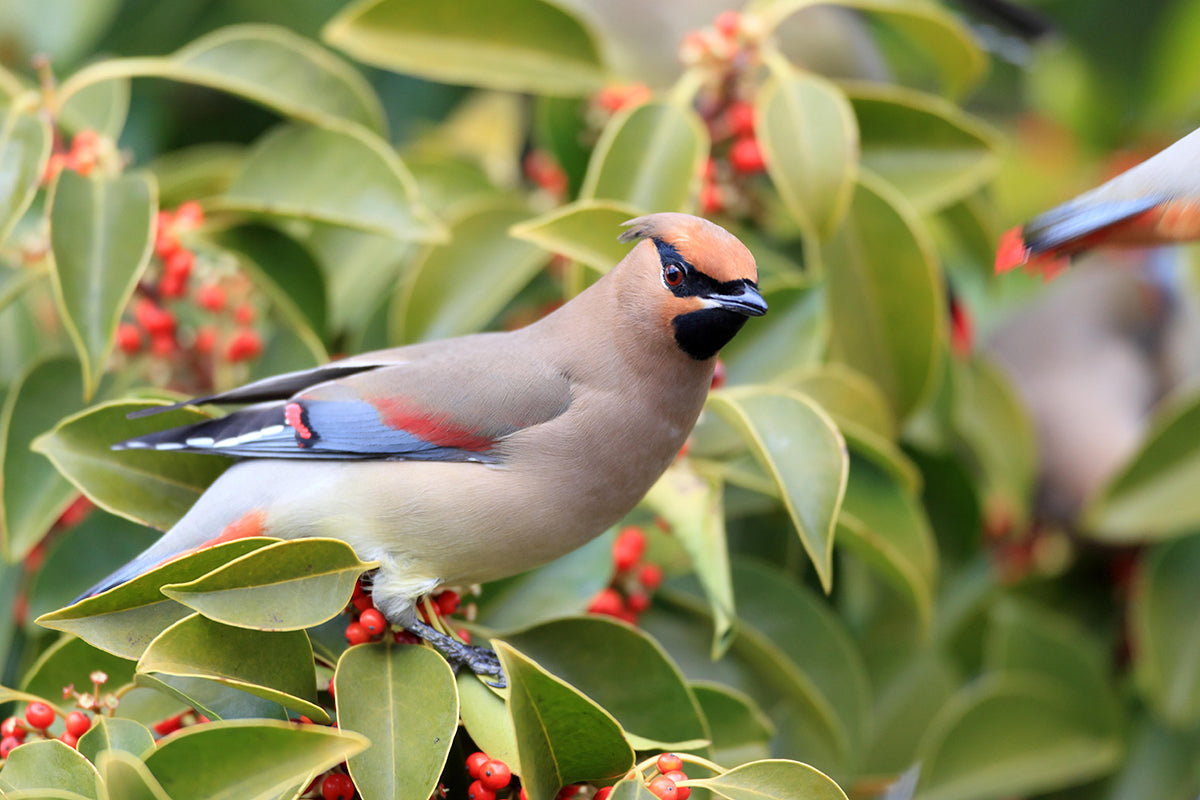Wildlife in the garden - winter migrants

We always celebrate the arrival of our spring and summer migrants such as swallows, swifts, cuckoos and nightingales. Less celebrated and often creeping in under the radar are our winter migrants, forced here by extreme cold weather from more northerly climes. Waxwing from Scandinavia, that beautiful bird, not seen by many, is often spotted in town car parks where marauding flocks enjoy the berries still hanging in tree species such as Cotoneaster, Sorbus or Malus.
The first sign of them is often a stream of keen birders heading towards a town car park with cameras and binoculars slung around their necks. In particularly cold conditions large numbers can arrive here. These mass influxes are known as irruptions.
Redwings from Iceland, our smallest member of the thrush family, can often be spotted in gardens feeding off fallen fruit or berried plants. Fieldfares, another member of the thrush family, migrate from northern Europe and are larger, tending to be spotted in more rural locations in large, noisy flocks. In particularly harsh weather they will venture into gardens to take advantage of any food left out for other birds. They’re especially fond of fallen apples.
Other winter migrants that often attract attention on garden feeders are the blackcaps. As the name suggests, the males sport a distinct black cap while on the female it’s a reddish brown. Although originally migrants and noteworthy they’re now present throughout the year. Other winter migrants that are less noticeable in your average garden are Bewick's swans who travel over 2,000 miles from Russia.







